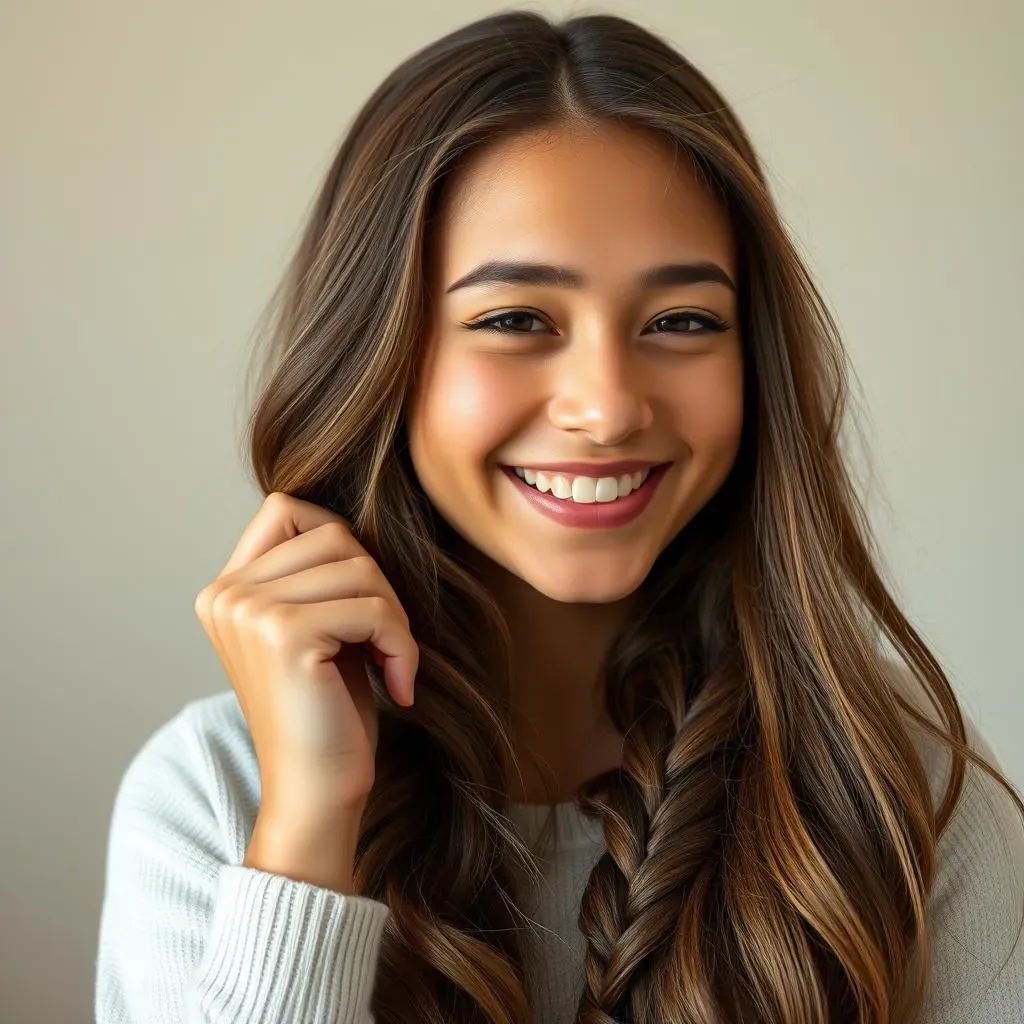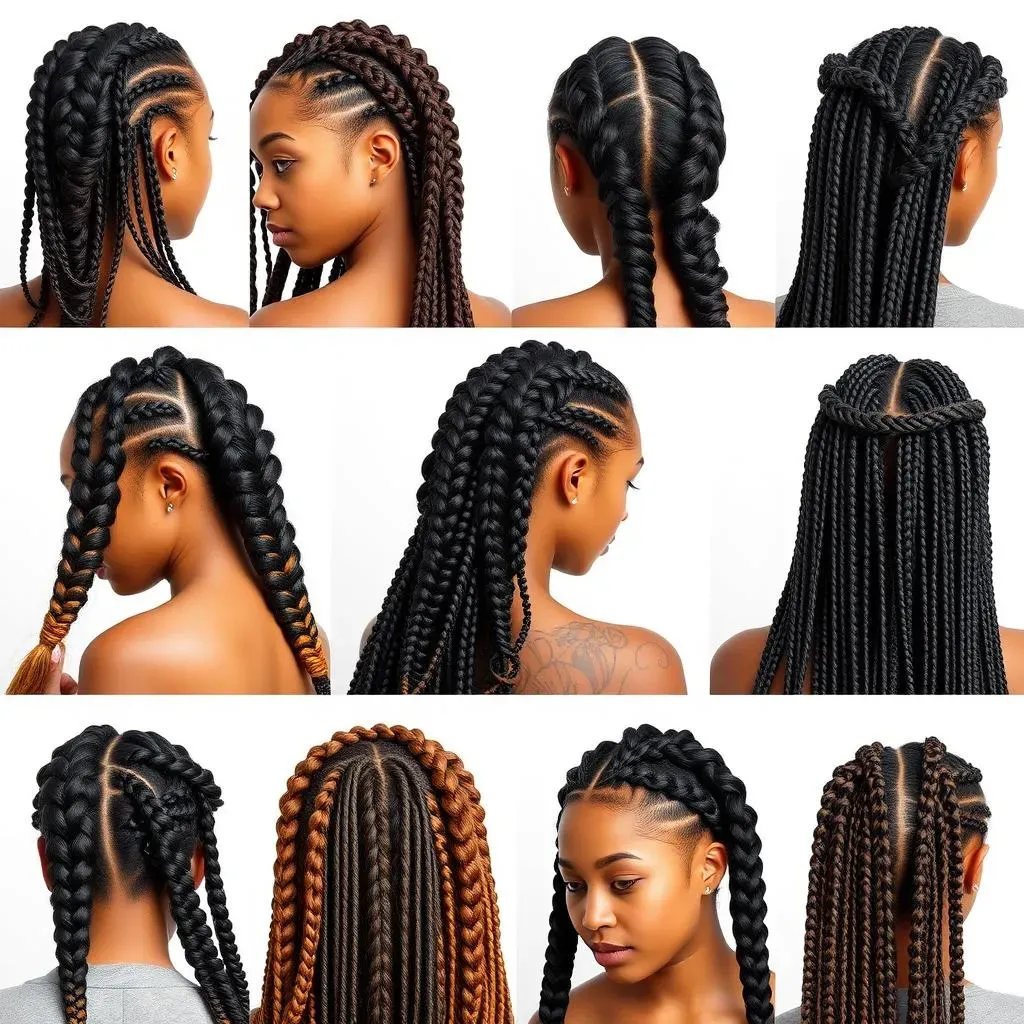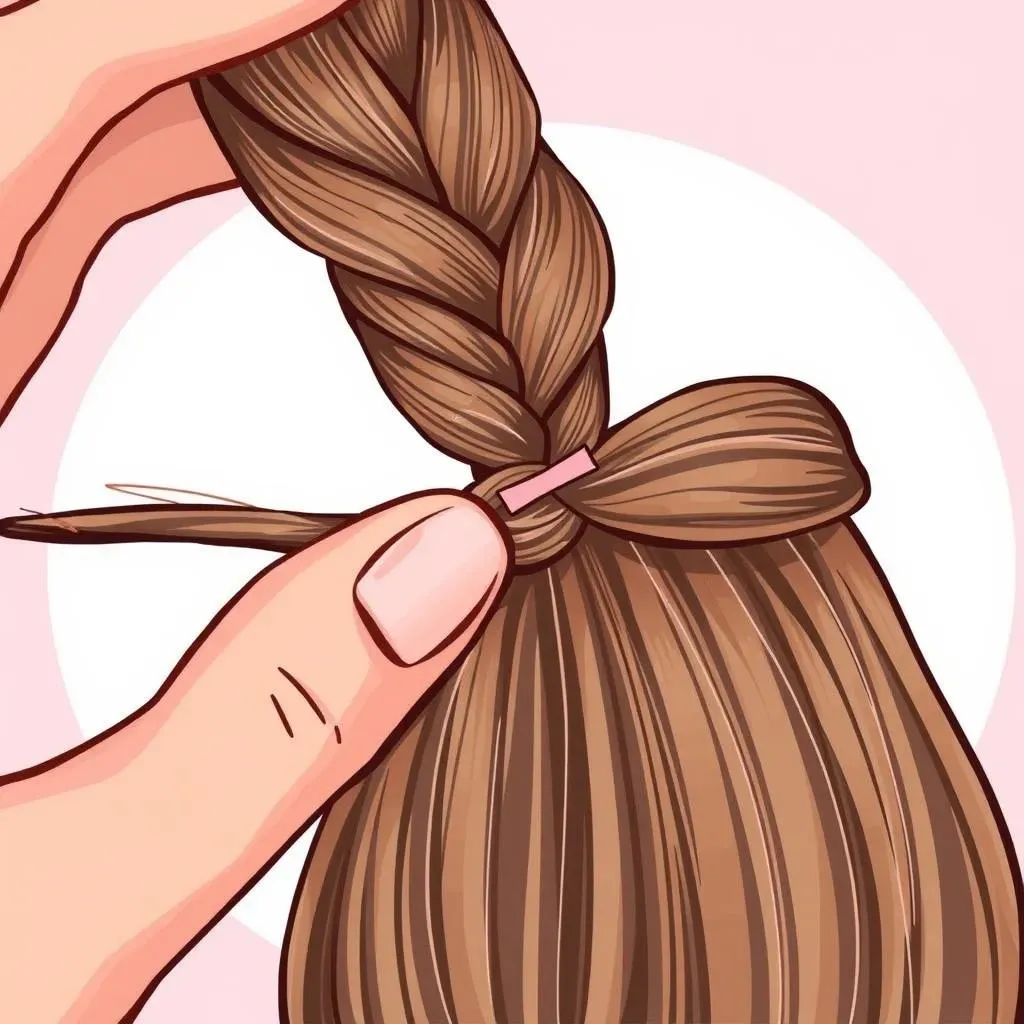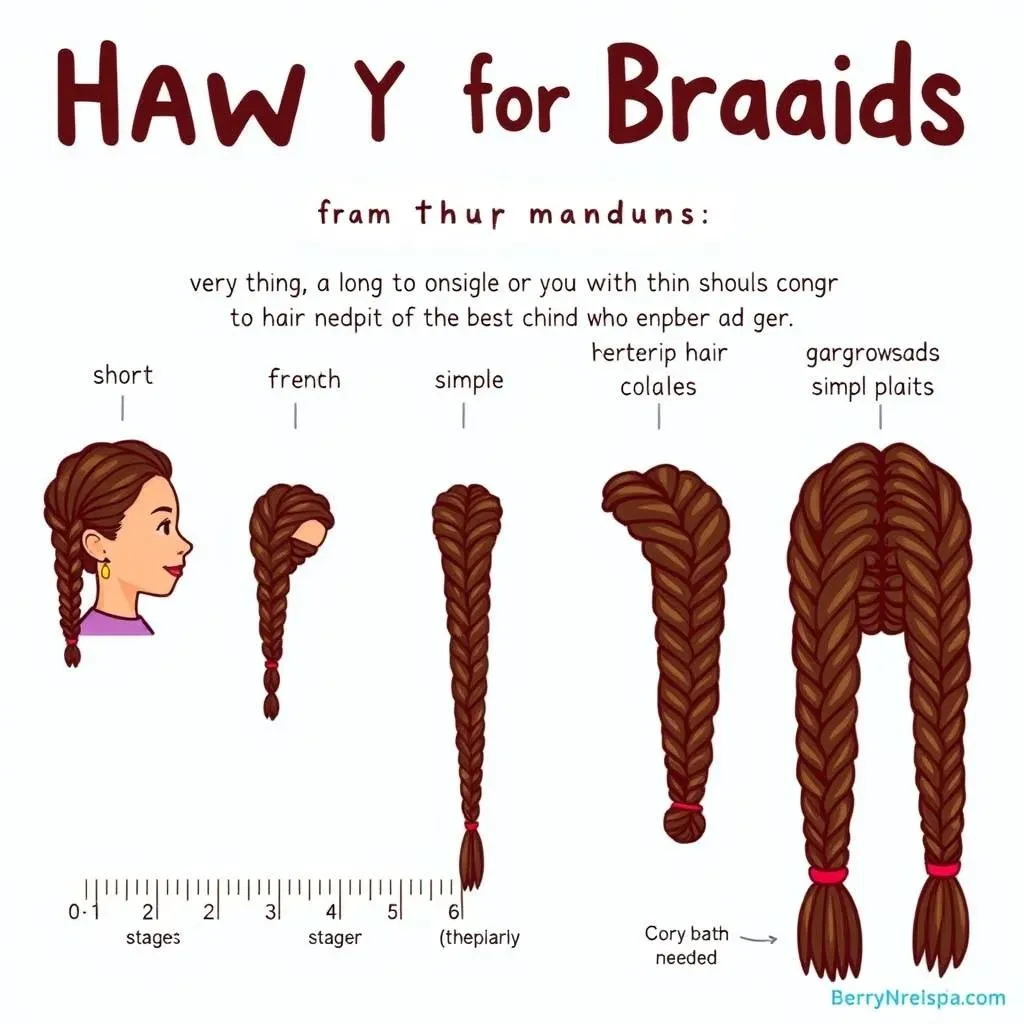Table of Contents
Ever stared longingly at those intricate braids, wondering if your hair is long enough to pull them off? You're not alone. Figuring out "how long does your hair need for braids" is a common question, whether you're aiming for simple plaits or elaborate cornrows. It's like trying to bake a cake without knowing the recipe – frustrating! This article is your recipe, your guide to understanding the hair length requirements for various braid styles. We'll cut through the confusion and give you the lowdown on what length you need to get started. We will explore the minimum length you need to even attempt a braid, how different braid styles require different lengths and some tricks for working with shorter hair. We’ll also chat about growing out your hair if you're not quite there yet. Ready to braid? Let's get started!
Minimum Hair Length for Braids: The TwoInch Rule
Minimum Hair Length for Braids: The TwoInch Rule
Okay, so you're itching to braid, but you're not sure if your hair is playing ball. The general rule of thumb? You're looking at a minimum of about two inches of hair to get most braid styles going. Think of it like this: two inches gives you just enough to grab onto and start creating a pattern. It's not a lot, but it's enough for the braid to have something to hold onto. Trying to braid hair shorter than that is like trying to build a house with toothpicks – it's just not gonna work. Of course, the longer the better, but two inches is where you can start to see some real braid action.
Different Braid Styles, Different Hair Lengths
Different Braid Styles, Different Hair Lengths
Alright, so you've got the two-inch rule down, but here’s the thing: not all braids are created equal. A simple three-strand braid? Yeah, two inches might just cut it. But if you're dreaming of something more complex, like French braids, Dutch braids, or even those super cool cornrows, you're going to need more length to work with. Think of it like this: the more intricate the braid, the more hair you need to create the pattern and maintain it. It's like trying to draw a detailed picture, you need a bigger canvas to fit it all in. Those fancy braids need a good amount of hair to weave into them.
Braid Style | Minimum Recommended Length |
|---|---|
Simple Three-Strand Braid | 2 inches |
French Braid | 4 inches |
Dutch Braid | 4 inches |
Cornrows | 3-4 inches |
Box Braids | 4 inches |
Tips for Braiding Short Hair: Making it Work
Tips for Braiding Short Hair: Making it Work
The Art of the Start: Prepping Your Hair
Okay, so your hair isn't exactly Rapunzel-length, but you’re determined to braid? I get it. The first step is all about prep. Think of it as laying the groundwork for your braid masterpiece. Start with clean, slightly damp hair. This makes it easier to handle and less likely to slip out of your grasp. A little bit of product, like a light mousse or styling cream, can also help to add some grip. Don't go overboard though, you don't want it to look greasy. It's all about finding that sweet spot of manageability.
Small Sections, Big Impact
When working with shorter hair, sectioning is your best friend. Instead of trying to grab huge chunks of hair, go for smaller, more manageable sections. This gives you more control and helps to keep the braid neat. It's like trying to paint a detailed picture with a tiny brush - you've got to be precise. Also, don't be afraid to use small elastics to secure the ends of your braids. These tiny heroes will keep your shorter strands from escaping and messing up your style.
Tip | Why it works |
|---|---|
Clean, damp hair | Easier to manage, less slippage |
Light styling product | Adds grip and control |
Small sections | More control, neater braids |
Tiny elastics | Keeps short strands secure |
Embrace the Imperfect: It's Okay to be Messy
Let's be real, braiding short hair is not going to be perfect. It's okay if some strands peek out or if your braid is a bit uneven. In fact, sometimes a slightly messy braid can look really cool and effortless. Think of it as embracing the "I woke up like this" vibe. Don't get hung up on trying to achieve perfection, just have fun with it. And remember, practice makes progress. The more you braid, the better you'll get at handling those shorter strands. So, don't give up if your first few attempts don't look like a magazine cover. Just keep going, and you'll be surprised at what you can achieve.
Growing Your Hair for Braids: Patience is Key
Growing Your Hair for Braids: Patience is Key
The Waiting Game: Understanding Hair Growth
So, you've tried the tips for shorter hair, but you're still dreaming of those long, flowing braids? It might be time to embrace the waiting game. Hair growth isn't a sprint; it's a marathon. On average, hair grows about half an inch per month, but this can vary from person to person. Factors like genetics, diet, and overall health can all play a role. Don't expect to go from a pixie cut to waist-length hair overnight, it just doesn't work that way. It's like waiting for a plant to grow, you can water it and give it sunlight, but you can't make it grow faster than it's meant to.
It's important to have realistic expectations and be patient with the process. There will be times when it feels like your hair isn't growing at all, but trust me, it is. Just keep taking care of it, and you'll start to see progress over time. Remember that consistency is key, and good things come to those who wait.
Nurturing Your Locks: Tips for Healthy Hair Growth
While you can't magically speed up hair growth, you can create an environment that promotes healthy hair. Think of it like tending a garden. You need to nourish the soil to help the plants grow strong and healthy. For your hair, this means focusing on a healthy diet, staying hydrated, and being gentle with your strands. Avoid harsh chemicals, excessive heat styling, and tight hairstyles that can cause breakage. Regular trims are also important to get rid of split ends. This might seem counterintuitive, but it will actually help your hair grow longer in the long run by preventing breakage.
Also, consider adding some hair-loving vitamins to your diet. Things like Biotin, Vitamin D, and Iron can make a big difference. But, before you start popping pills, talk to your doctor to see what's right for you. And don't forget that scalp massages are your friend - they help to increase blood flow to your hair follicles, encouraging growth. So, take a few minutes every day to give your scalp some love. It's like giving your hair a little pep talk, telling it to grow and be awesome.
Tip | Why it helps |
|---|---|
Healthy Diet | Provides essential nutrients for hair growth |
Stay Hydrated | Keeps hair moisturized and healthy |
Gentle Hair Care | Prevents breakage and damage |
Regular Trims | Removes split ends and promotes growth |
Vitamins & Minerals | Supports healthy hair follicles |
Scalp Massage | Increase blood flow to the scalp |
Wrapping Up: Braids and Hair Length
So, there you have it. Braiding isn't a one-size-fits-all game, and "how long does your hair need for braids" really depends on the look you're going for. While two inches is often the minimum, longer hair definitely makes things easier and opens up more style possibilities. Don't be discouraged if you're not there yet; growing your hair is a journey, and there are plenty of ways to rock shorter styles while you wait. The key is to have patience, a little practice, and maybe a good mirror. Now, go forth and braid!
